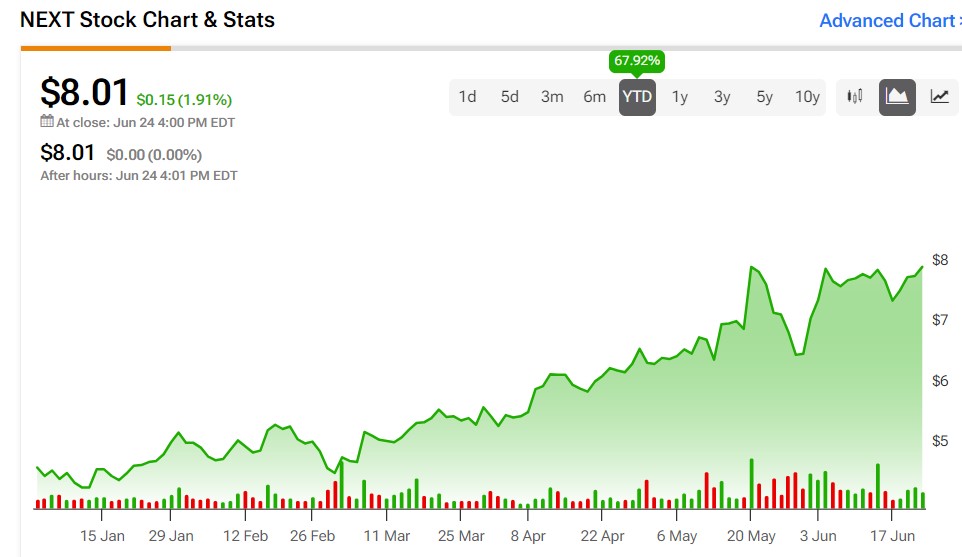Wage inflation and an all-around labor shortage have been a drag on the otherwise booming Liquified Natural Gas (LNG) industry. The reason is that although the U.S. Gulf Coast is a growing hub for LNG development, it is faced with two troubling challenges- a skilled labor shortage and persistent inflation driven by strong wage growth. These issues are creating significant challenges for developers and delaying success in getting project financing approval.
Confident Investing Starts Here:
- Quickly and easily unpack a company's performance with TipRanks' new KPI Data for smart investment decisions
- Receive undervalued, market resilient stocks straight to you inbox with TipRanks' Smart Value Newsletter
Sixteen Plants on the Drawing Board
There are currently five LNG plants under development in Texas and Louisiana and another 16 across the U.S. seeking investors’ and customers’ commitments. The five alone would produce enough to rank the U.S. as the world’s top exporter for years into the future, with a combined capacity of 86.6 million metric tons per annum (MTPA) of LNG.
Rising Costs Threatens Project Viability
Labor costs question the viability of the projects, creating problems even getting them off the ground. This harsh reality is holding back LNG’s potential dominance. With a 20% jump since 2021, construction budgets are exploding, squeezing projected returns and jeopardizing the financial viability of some projects, especially those seeking new investors.
An example of a nightmare scenario would be Golden Pass LNG. This is a U.S. project where the main contractor had budget overruns totaling $2.4 billion; construction was then halted, which caused the project to go bankrupt. The project owner, Sempra LNG (NYSE:SRE) has explored a new agreement to continue the project. This new agreement is with privately held contractor Bechtel Corp. The presumption is that project cost management could improve as Bechtel has demonstrated better cost control over its other projects. Sempra has also acted to reduce its stake in another Texas project called Port Arthur LNG. The reason once again was skyrocketing construction costs,

NextDecade Secures Funding Despite EPC Cost Increase
In the other spectrum, NextDecade (NASDAQ:NEXT) is a rare success story. it achieved financial approval for the first phase of its $18 billion Rio Grande LNG terminal by attracting new investors who diluted the original investors’ stake due to rising engineering, procurement, and construction (EPC) costs.

The TipRanks Stock and Price Analysis tool shows that NEXT has been on a upward trend, rising nearly 68% since the beginning of the year.
Labor Shortage Drives Wage Hikes and Delays
The root cause of these cost increases lies in the aftermath of the pandemic. A shortage of skilled labor has forced contractors to raise wages by as much as 20% in order to attract talent to the industry. The labor challenges are reflected in reduced workforce data. Regulatory filings and company statements reveal that the five under-development plants had over 20,000 employees until Golden Pass LNG’s prime contractor, Zachry, laid off 4,000 workers.
Data Confirms Industry Trends
U.S. Bureau of Labor and Statistics data corroborates the wage surge. Construction worker wages in Louisiana’s oil and gas pipeline sectors, where many new plants are located, jumped 19% in 2023 compared to 2022.
LNG research firm Rapidan Energy Group’s data reinforces this trend, showing EPC contracts for new LNG plants increased between 18% and 25% from 2021 to 2023.
Potential Shift in Contracting Models
Consulting firm Poten & Partners suggests that EPC contractors may transition to a less risky model. They might reduce the scope of their contracts, making more elements cost-reimbursable for actual expenses sustained during the projects.
“EPC contractors might now be factoring in a 30% to 40% increase into their lump-sum turnkey contracts,” the firm noted last month.
Key Takeaway
The U.S. LNG boom faces a significant challenge. The difficult mix of a skilled labor shortage and persistent inflation is jeopardizing project timelines and budgets. While some developers find creative solutions, the industry grapples with a potential shift in contracting models to mitigate financial risks.
















